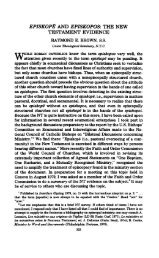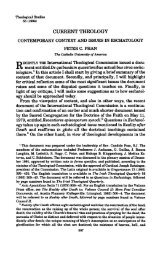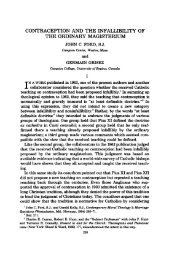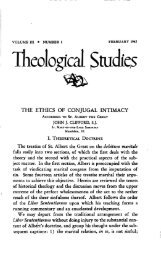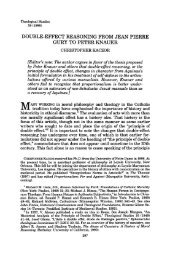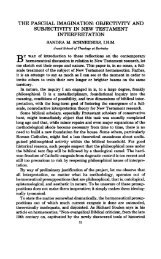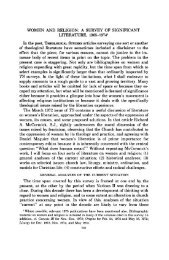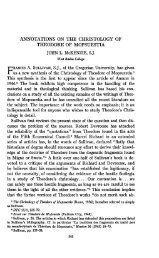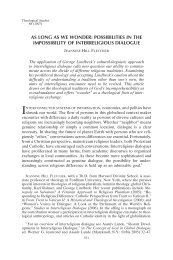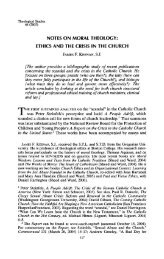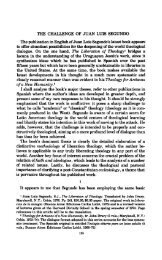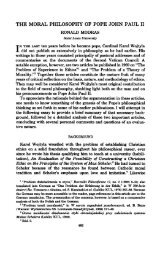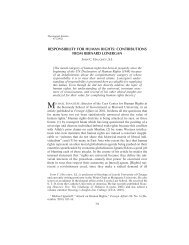SYMBOL, MYTH, AND THE BIBLICAL REVELATION AVERY ...
SYMBOL, MYTH, AND THE BIBLICAL REVELATION AVERY ...
SYMBOL, MYTH, AND THE BIBLICAL REVELATION AVERY ...
You also want an ePaper? Increase the reach of your titles
YUMPU automatically turns print PDFs into web optimized ePapers that Google loves.
<strong>SYMBOL</strong>, <strong>MYTH</strong>, <strong>AND</strong> <strong>THE</strong> <strong>BIBLICAL</strong> <strong>REVELATION</strong> 23<br />
ism, they might be expected to adopt similar techniques, explaining<br />
the gospel in terms of the religious thought characteristic of the Gentiles<br />
(cf. Acts 17:23).<br />
It is presently controverted among New Testament scholars to what<br />
extent Paul and John were influenced by Gnosticism and the mystery<br />
religions. Without attempting to solve this disputed question, we may<br />
say that such influences should not be ruled out on a priori grounds.<br />
If the Gnostic myth of the redeemed Redeemer seemed to illustrate<br />
well the meaning of Christ's death and resurrection in its cosmic and<br />
heavenly dimensions, there is no reason to think that Paul would not<br />
have exploited it in the service of the exalted Christology which we<br />
find in Colossians and Ephesians. So too, in his efforts to bring the<br />
Hellenistic communities to appreciate the wonderful effects of baptism<br />
and the Eucharist, Paul could have consciously borrowed from the<br />
language of the mystery religions.<br />
Christ, in the perspectives of faith, appears as an answer to the hopes<br />
and prayers of all mankind, pagans as well as Jews. If Messianic<br />
prophecy expressed the hopes and longings of Israel, myth was the<br />
vehicle in which the Gentiles set forth their deepest anxieties and<br />
presentiments. "In daring to take over the language of myth," Schlier<br />
asserts, "the New Testament shows that Jesus Christ is the end not<br />
only of the Law, but of myth besides." 45 In this connection we may<br />
recall the remark of Harnack: "In Christ the primal figure (Urbild) of<br />
all the myths has become history." 46<br />
This process of restating the Christian message in language influenced<br />
by pagan myth and mystery—the first beginnings of which may<br />
be indistinctly discerned in the New Testament itself—was to be<br />
carried much further, perhaps even too far, in the following centuries.<br />
Christian art and poetry did not hesitate to depict Christ in the form<br />
of Hermes, Orpheus, and Odysseus, and to apply to Him, the true<br />
Sun of Justice, what the pagan myths had undeservedly attributed to<br />
the sun-god Helios. The reasons for such procedures are apparent from<br />
the words which Clement of Alexandria addressed to the cultured<br />
pagans of his day: "Come, I will show you the Word and the mysteries<br />
"Art. cit., p. 212.<br />
46 Die Entstehung der christlichen Theologie und des christlichen Dogmas (1927) p. 16;<br />
quoted by G. Miegge, op. cit., p. 106.



